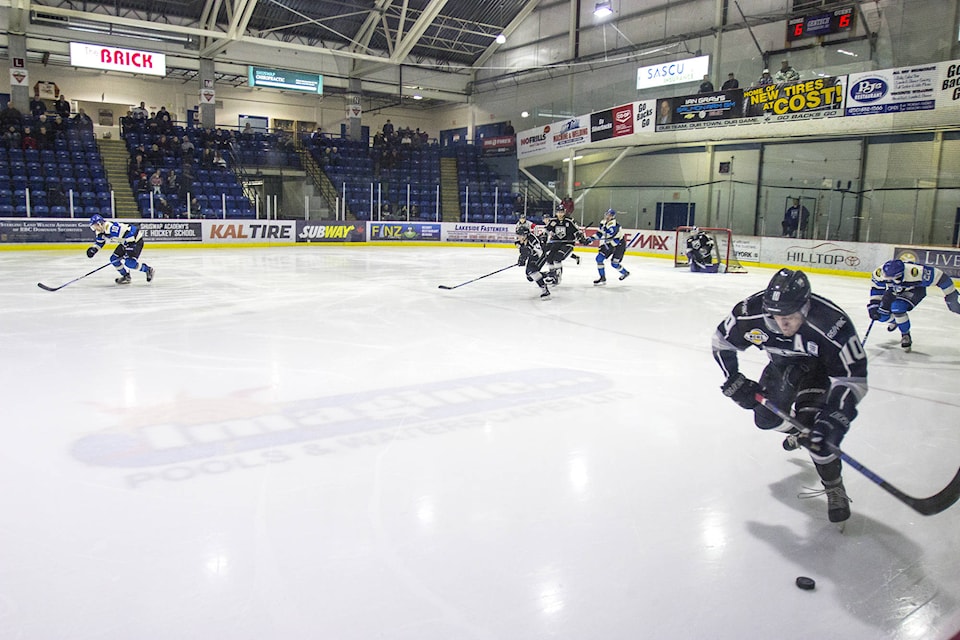The City of Salmon Arm’s carbon footprint is going up, not down, despite attempts to reduce it.
Like most B.C. municipalities, the city signed onto the BC Climate Action Charter in 2008. It is a non-legally binding agreement between the province, the Union of BC Municipalities (UBCM) and local governments “that acknowledges that climate change is a reality and establishes a number of goals to address the issue going forward,” explains a report from city staff.
Local governments, such as Salmon Arm, agreed to have their operations carbon neutral by 2012. However, that has still not happened.
Local governments also agreed to measure and report on their greenhouse gas emissions while creating compact and more energy efficient communities.
In 2017, city operations produced 2,100.5 tons of carbon emissions, up 237 tonnes or about 10 per cent from the year before.
The emissions inventory tracks energy consumption – such as natural gas, electricity, gasoline, diesel and propane – from operations and quantifies the corresponding GHG emissions.
Related: BC seeks study on a particularly powerful greenhouse gas
Related: Canada’s greenhouse gas targets few and far away
Staff told Monday’s meeting of the city’s development and planning services committee that there are practical reasons for last year’s increase, including lower temperatures and a busy year for public works and capital projects.
The largest creator of greenhouse gas emissions in the city, with 932.53 tonnes, is the arts, recreation, parks and cultural services area, which includes the Shaw Centre and the SASCU Rec Centre. Coming in second place in emissions with 451.26 tonnes is drinking, storm and waste water services, while roads and traffic operations came in third place with 415.59 tonnes of emissions.
In 2016 the city’s total was 1878.9 tonnes while in 2015 it was 1866.3.
Related: CSRD honoured for sustainable waste management
Despite its lack of carbon neutrality, the city has been receiving Climate Action Revenue Incentive Program (CARIP) grants for the past 10 years for continuing to measure and report its carbon emissions, as well as trying to reduce them.
“They recognize our efforts to make our buildings and facilities more efficient, along with lighting projects, trail and sidewalk development, etc,” Kevin Pearson, director of development services, explained.
2017 projects included: refrigeration upgrades at the Shaw Centre; a pool pump upgrade; LED lighting upgrades in the atrium of the city hall building; airport LED lighting; biannual residential yard waste pick-up; Blackburn Park improvements; a sidewalk installation; a new Canoe Beach crosswalk; bicycle route enhancement (one kilometre of lane marking); and 7,775 metres of new Greenways trails.
“We use the money for projects to try and reduce energy consumption…” Pearson said. “Nevertheless, it’s up from the year before but we are trying.”
Coun. Kevin Flynn pointed out that the service areas that create the most emissions are also those that make up some of the largest portions of the city’s budget.
Coun. Alan Harrison noted that communities with colder climates logically have relatively higher emissions.
Coun. Tim Lavery said that if and when the city goes to curbside organic waste recycling, that will produce a large carbon offset.
City politicians will discuss their plans for climate action further at their Monday, April 23 council meeting.
To be carbon neutral, council could elect to purchase carbon offsets from the province, but successive councils have elected not to. As well as being costly, the city would not be in control of how the funds are spent by the provincial Ministry of Environment.
@SalmonArm
marthawickett@saobserver.net
Like us on Facebook and follow us on Twitter
